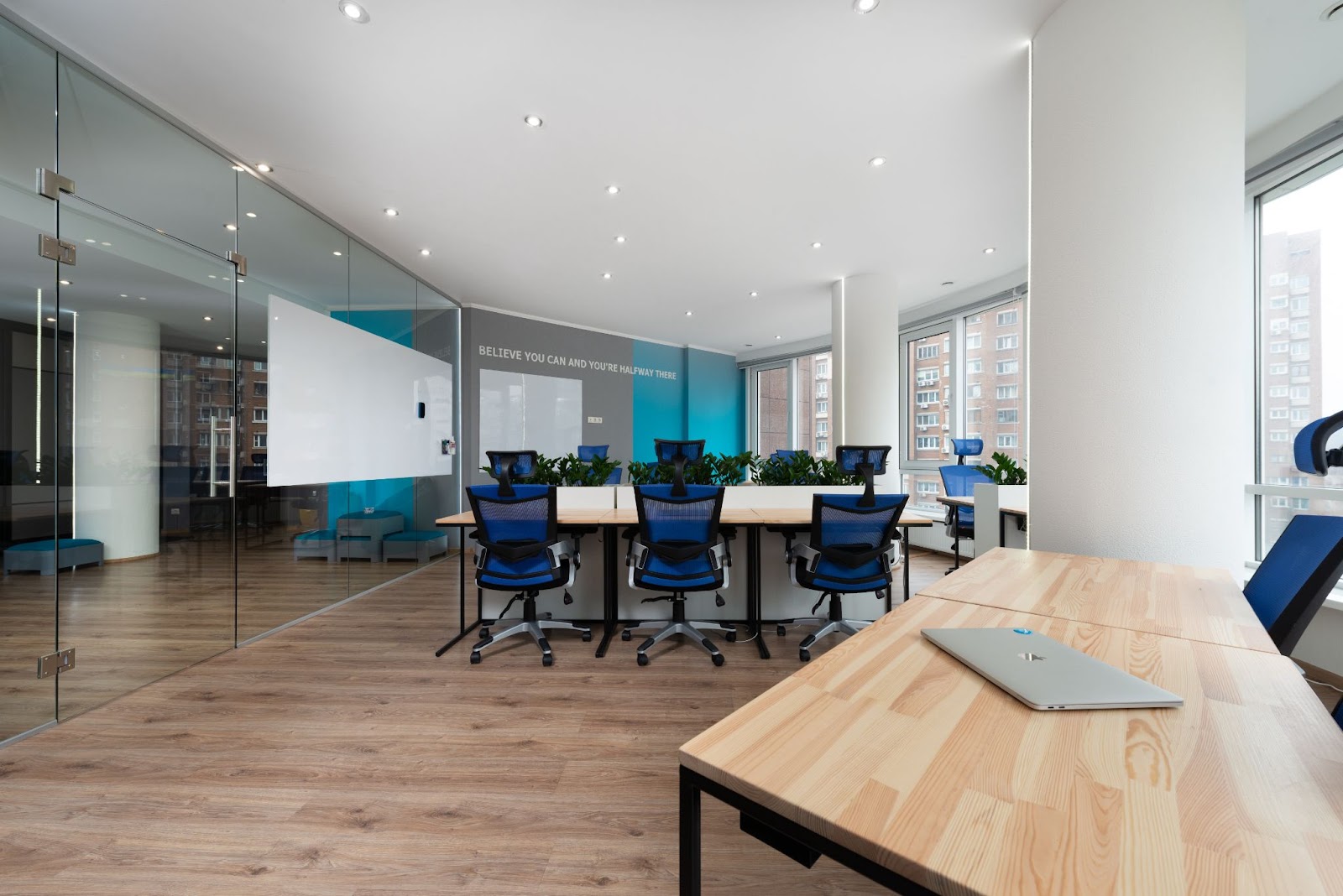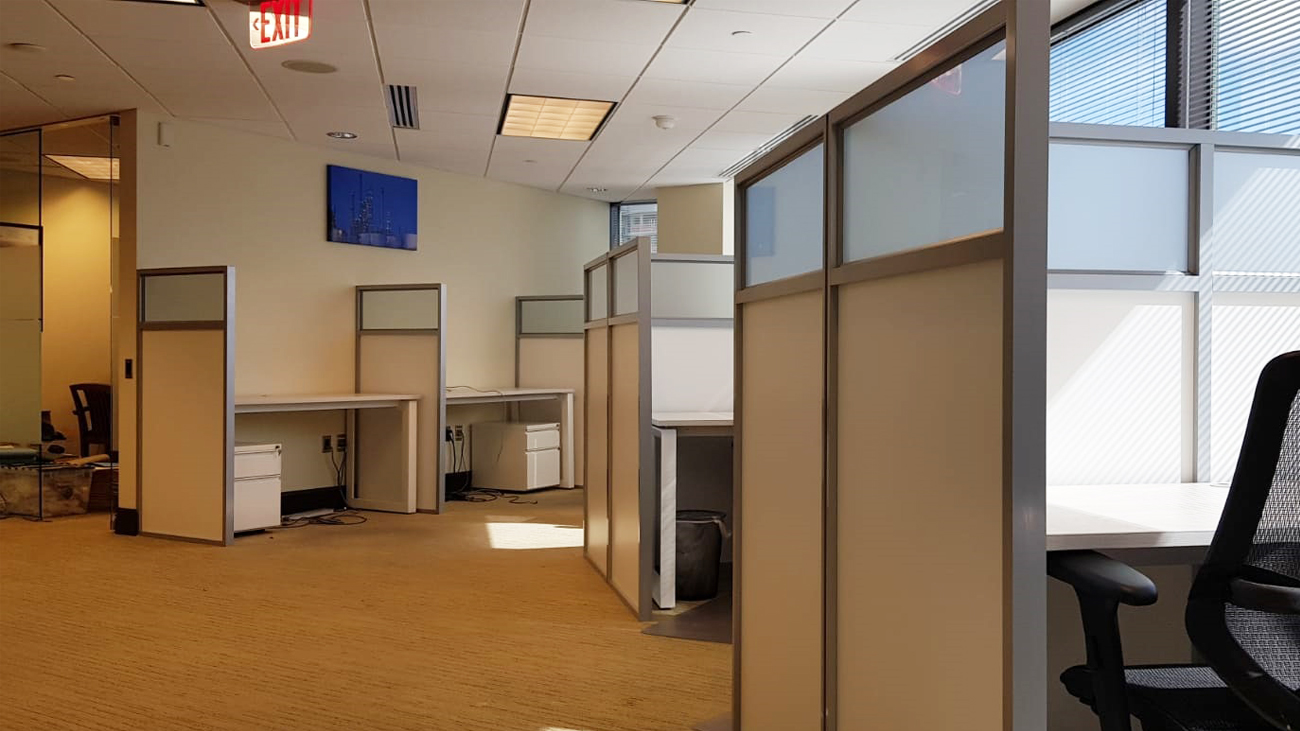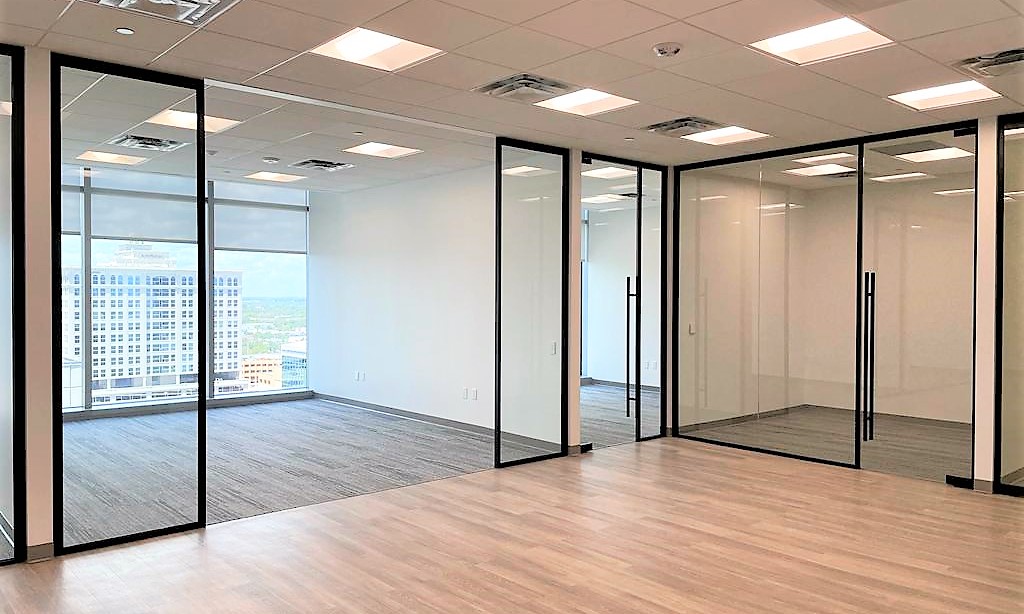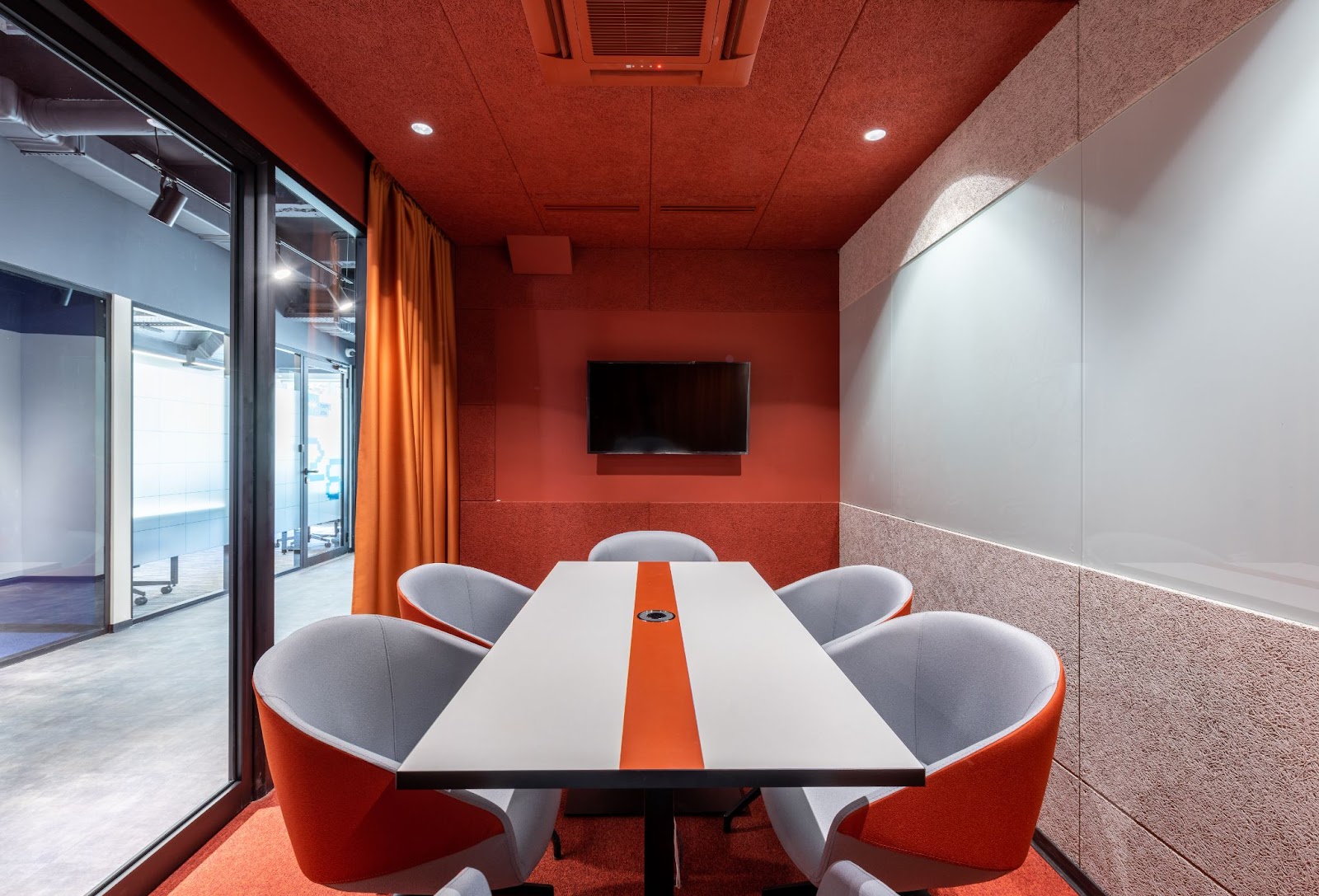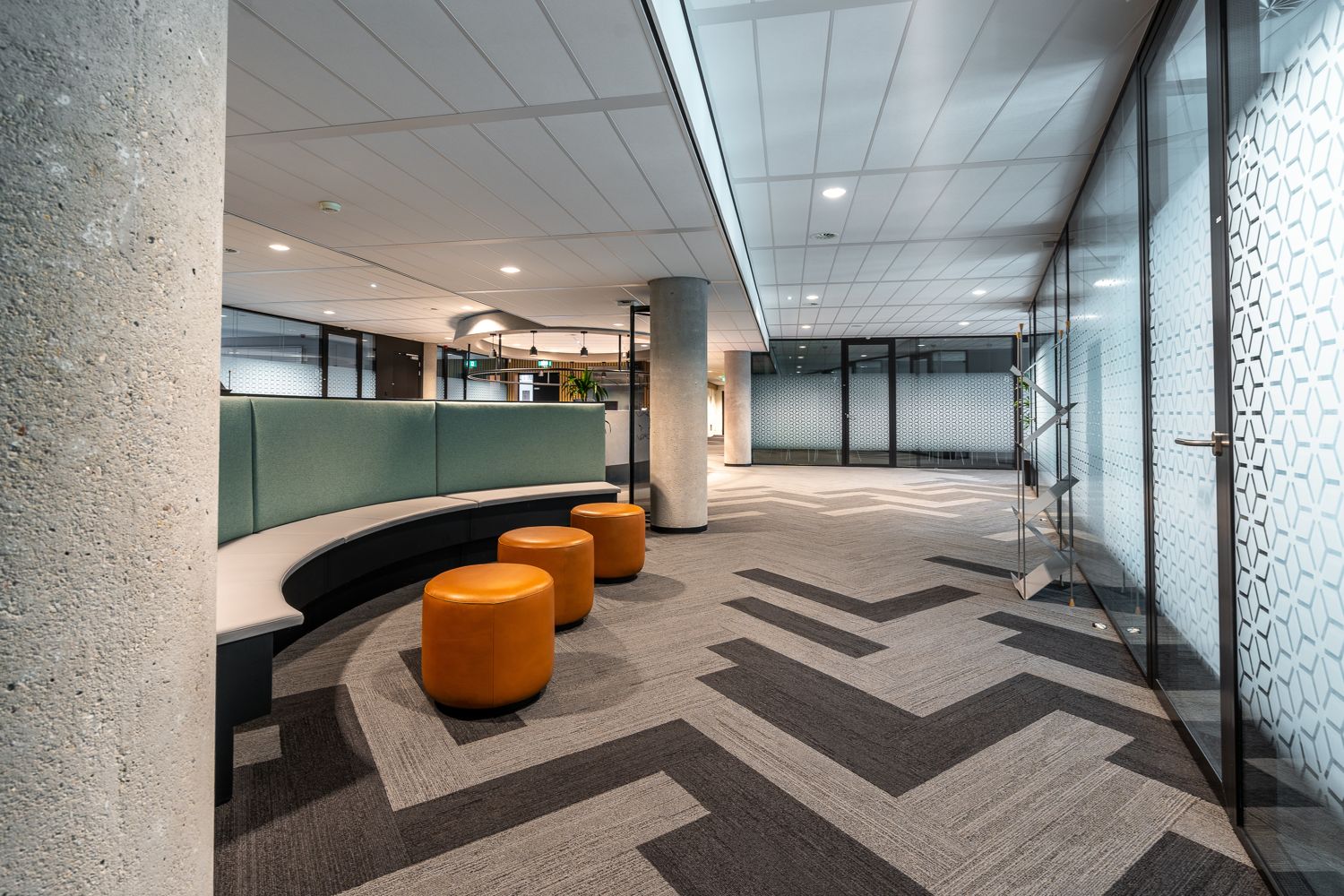Workplace design is no longer just about functionality—it’s also about reflecting a company’s identity, inspiring creativity, and enhancing employee well-being. In an era when openness, transparency, and collaboration are paramount, frameless glass walls have emerged as a leading solution for achieving a truly modern and stylish office. These sleek, minimalist installations not only transform the look and feel of work environments but also respond to the evolving demands of today’s workforce.
For many businesses, the goal is to strike the right balance between aesthetics and practicality. Frameless glass walls provide a sophisticated, contemporary appearance while addressing key workplace needs such as natural light, flexibility, and noise management. Whether you’re redesigning an existing workspace or building an entirely new office, understanding the principles and benefits of this design choice can help you create an environment that aligns with your brand and supports your team’s productivity.
In this comprehensive guide, we’ll explore why frameless glass walls have become so popular, the elements that contribute to a modern and stylish office, practical considerations for installation, and how to integrate these glass panels seamlessly with other design features. We’ll also discuss how to maintain a balance between openness and privacy, ensuring your office is both functional and eye-catching.
Why Modern Offices Embrace Frameless Glass Walls
Modern offices are a reflection of contemporary work culture, which values transparency, collaboration, and a strong visual identity. Frameless glass walls, with their clean lines and minimalist profiles, reinforce these values in several ways:
- Visual Openness and Light Transmission:
Traditional walls often compartmentalize spaces, reduce lines of sight, and block natural light. Frameless glass walls, by contrast, maintain a continuous field of vision. Employees can see across the office, fostering a sense of community and collaboration. The abundance of natural light not only improves mood and productivity but also reduces energy consumption by minimizing the need for artificial lighting. - Sleek, Contemporary Appearance:
Frameless glass embodies simplicity and sophistication. Removing bulky frames and cluttered edges creates a crisp, modern aesthetic. This high-end look appeals to businesses aiming to convey innovation, forward-thinking, and professionalism to clients and visitors. - Flexibility and Adaptability:
As work environments evolve—teams grow, departments shift, and new collaborations form—frameless glass walls can be reconfigured to adapt to changing needs. This versatility makes them an excellent long-term investment, preventing expensive renovations and downtime associated with rebuilding fixed walls. - Enhanced Productivity and Engagement:
Studies have shown that exposure to natural light and connections to the broader workspace can elevate employee engagement. Frameless glass walls help employees feel more integrated into the company’s mission and can encourage spontaneous communication, idea-sharing, and a sense of shared purpose.
Key Elements of a Modern, Stylish Office
Embracing frameless glass walls is just one part of creating a modern office environment. A stylish workplace involves a cohesive approach to design that integrates various elements seamlessly:
- Minimalist Aesthetics:
Modern offices often favor clean lines, uncluttered spaces, and muted color palettes. Frameless glass walls complement minimalism perfectly, as their transparency and simplicity echo the fundamentals of this design philosophy. - Natural Light and Biophilic Design:
A connection to nature—whether through plants, natural textures, or sunlight—has been linked to reduced stress and improved well-being. Frameless glass walls maximize the reach of natural light, allowing it to penetrate deep into the office interior. Pairing glass with greenery, organic materials, or water features can further humanize the workspace. - Flexible Furniture and Configurations:
Offices now serve multiple functions: formal meetings, informal collaborations, private calls, and focus work. The ability to quickly rearrange furniture or repurpose meeting areas is crucial. Frameless glass walls support this flexibility by defining zones without permanently locking in the layout. - Brand Identity and Personalization:
A modern office can also express a company’s unique brand. Incorporate logos, brand colors, or subtle graphics into the design of the glass walls. Consider frosted patterns that reflect company values or strategic tinting that complements your brand’s color palette. This personalized touch makes the office feel more authentic and aligned with the organization’s story.
Planning for Frameless Glass Wall Installation
Transitioning to frameless glass walls involves thoughtful planning. Proper preparation ensures your new design not only looks fantastic but also meets practical requirements.
- Space Assessment and Layout:
Begin with a thorough evaluation of your current space. Identify which areas would benefit most from transparency and natural light. For instance, central communal areas, hallways, and conference rooms often serve as prime candidates. Consider the views you want to highlight—whether it’s a lush outdoor courtyard in a Florida office or an inspiring urban skyline from a high-rise.Additionally, identify functional zones. Do you need quiet nooks for focused work, open collaboration spaces, or multifunctional meeting rooms? Mapping out these requirements will help determine the best placement and configuration of frameless glass walls. - Privacy and Acoustic Considerations:
While transparency is an asset, some level of privacy is still important. Sensitive meetings, HR discussions, and confidential projects may require more discretion. Incorporating frosted or tinted glass panels can strike a balance between openness and confidentiality.Acoustic privacy is another factor. Glass can bounce sound around, potentially increasing noise levels. Consider acoustic treatments such as sound-absorbing panels, carpeting, or specialized glass coatings. By combining frameless glass walls with appropriate sound management solutions, you ensure that your team can communicate effectively without distraction. - Material Selection and Quality:
Frameless glass walls differ in their thickness, type of glass (tempered, laminated, low-iron), and finishing details. High-quality tempered glass ensures safety and durability, reducing the risk of breakage. Opting for low-iron glass can eliminate the greenish tint often found in standard glass, resulting in a clearer, brighter appearance.The hardware—such as hinges, door handles, and brackets—also contributes to the overall aesthetic. Choose sleek metal finishes, like brushed aluminum or stainless steel, to maintain a contemporary look. Quality materials not only guarantee longevity but also lend a premium feel to the workspace. - Professional Installation and Codes:
Installing frameless glass walls demands precision. Partnering with experienced professionals ensures the partitions are secure, level, and meet local building codes. Safety is paramount, and professional installers will ensure that the glass is properly sealed, load-bearing elements are correctly positioned, and any doors or sliding panels operate smoothly.
Integrating Frameless Glass Walls into Your Overall Design
To fully realize the potential of frameless glass walls, integrate them thoughtfully with other design elements. The result is a cohesive environment that amplifies your office’s core values and functions.
- Lighting Design:
Natural light sets the tone, but artificial lighting plays a crucial supporting role. Embrace layered lighting strategies—combine ambient, task, and accent lighting to create a balanced, comfortable atmosphere. For instance, LED strips or pendant lamps can highlight architectural details or artwork visible through the glass walls, enhancing the space’s aesthetic appeal. - Color and Texture Coordination:
The transparency of frameless glass makes the colors and textures of surrounding surfaces more impactful. Neutral walls and flooring allow light to reflect evenly, while strategic pops of color—like statement furniture pieces or brand-hued accents—add personality. Consider using warm wood finishes, textured rugs, or patterned wall panels behind the glass to create visual interest and depth. - Furniture Selection and Layout:
Choose furniture that complements the open feel provided by glass walls. Low-profile seating, sleek desks, and multipurpose tables maintain the contemporary aesthetic. Group furniture to define functional zones. For example, cluster lounge chairs and coffee tables to form a casual meeting area, or arrange ergonomic desks near natural light sources for individual work.Aim for spaces that feel neither too cramped nor too sparse. The transparency of frameless glass walls means clutter becomes more visible, so opt for storage solutions that keep items organized. Furniture with built-in storage, wall-mounted shelves, or discrete cabinets help maintain a tidy environment. - Wayfinding and Signage:
As offices become more open, visitors and employees may need subtle cues to navigate the space. Integrating signage onto or near glass walls can guide people without obstructing views. Minimalist signs etched onto glass panels or discreet wall-mounted directories maintain the clean aesthetic while assisting with orientation.
Balancing Openness and Privacy
While the hallmark of frameless glass walls is their openness, not every situation calls for complete transparency. Finding the right balance between openness and privacy is key to making your office not just stylish, but also functional.
- Frosted and Patterned Glass:
Strategic frosting or etching can obscure direct lines of sight while still allowing light to pass through. Decorative patterns—such as gradient frosts, geometric shapes, or subtle branding elements—can delineate private offices, meeting rooms, or quiet zones without reverting to solid walls. - Switchable Smart Glass:
For ultimate flexibility, consider switchable smart glass. With the press of a button, you can transform glass from transparent to opaque. This feature is ideal for boardrooms hosting confidential discussions or client presentations that require a momentary shield from the rest of the office. - Acoustic Pods and Booths:
If certain activities require sound insulation, freestanding acoustic pods or phone booths can complement frameless glass walls. These enclosed areas provide quiet retreats in an open environment, ensuring employees can focus on important tasks without distraction. - Gradual Transitions Between Spaces:
Rather than drastic shifts from fully open to fully enclosed, consider transitional areas. For example, glass partitions that become progressively more opaque as one moves from collaborative spaces towards individual workstations can create a subtle gradient of privacy, reflecting the variety of tasks performed in the office.
Leveraging Technology and Innovations
The modern office increasingly integrates technology into its design. Frameless glass walls can be enhanced with innovative solutions that blend aesthetics and functionality.
- Interactive Displays and Whiteboards:
Certain glass panels can double as interactive touchscreens or writable surfaces. This transforms partitions into collaborative tools, ideal for brainstorming sessions, planning meetings, or client presentations. Employees can jot down ideas, share digital content, and iterate quickly—further reinforcing a culture of innovation. - Smart Tinting and Solar Control Films:
Beyond simple frosting, advanced films can dynamically adjust tint levels based on external conditions. Such technology helps regulate heat gain, glare, and UV exposure. Employees remain comfortable, and the office stays energy-efficient. This seamless integration of technology maintains the clean lines of frameless glass, enhancing practicality without detracting from style. - Acoustic Enhancement:
Innovations in acoustic glass technology and coatings can improve sound insulation. Incorporating these solutions ensures that even large open areas remain conducive to focused work. The combination of advanced materials and frameless construction can deliver quiet, productive environments that otherwise seem at odds with the notion of open concept designs.
Sustainable Design Considerations
Sustainability is an integral part of modern office design, and frameless glass walls align well with eco-friendly principles:
- Energy Efficiency:
By maximizing natural light, businesses reduce reliance on artificial lighting. Carefully chosen glazing can also moderate indoor temperatures, lowering heating and cooling demands. This not only saves energy but can also contribute to achieving green building certifications like LEED. - Long-Lasting Materials:
High-quality glass and durable hardware ensure a long lifespan for partitions. Unlike drywall or other materials that may need frequent replacement or maintenance, frameless glass stands the test of time, reducing waste and resource consumption. - Reusability and Adaptability:
The modular nature of glass walls allows them to be reconfigured or moved if the office layout changes. This adaptability means less demolition and reduced construction waste over the lifespan of the workspace. - Healthier Indoor Environment:
Increased natural light, better air circulation, and transparency can support employee health. Well-designed spaces with good light quality often result in improved mood, reduced stress, and even better sleep patterns.
Showcasing Brand Image and Culture
A stylish, modern office isn’t just about aesthetics—it’s a powerful tool for expressing brand identity and nurturing company culture. Frameless glass walls help convey a forward-thinking, inclusive atmosphere that resonates with employees and clients alike.
- First Impressions for Visitors:
When clients walk into an office that’s awash in natural light and reveals an open, bustling environment, they immediately sense the company’s ethos. The absence of traditional barriers suggests honesty, transparency, and a willingness to collaborate. This can influence how clients perceive the firm’s reliability and creative thinking. - Employee Engagement and Pride:
Employees who work in visually inspiring surroundings often feel more connected to their company’s values. Frameless glass walls demonstrate an investment in their comfort and productivity. Team members are likely to feel proud of their workplace, which can translate into higher retention and stronger brand advocacy. - Consistency Across Multiple Locations:
For companies with multiple offices, using frameless glass walls creates a unifying design language. This consistency helps establish brand recognition and cohesion, ensuring visitors and employees have a similar experience regardless of their location.
Maintenance and Care
To preserve the modern, stylish appeal of frameless glass walls, consider the following maintenance steps:
- Regular Cleaning:
Glass surfaces show smudges and fingerprints easily. Establish a regular cleaning routine, using non-abrasive cleaners and soft microfiber cloths to maintain clarity and shine. Keeping surfaces pristine reinforces the office’s high-quality look. - Inspection of Hardware:
Periodically check hinges, door closers, and other hardware for signs of wear or misalignment. Addressing minor issues promptly prevents potential safety hazards and prolongs the lifespan of the glass partitions. - Adapting to Seasonal Changes:
In regions with strong seasonal differences—like intense sunlight in warmer months—monitor how light and heat affect the office. Adjust shading, tinting, or internal layouts to ensure ongoing comfort and efficiency.
The Long-Term Value of Frameless Glass Walls
Investing in frameless glass walls yields returns in productivity, employee satisfaction, and brand perception. By fostering an environment that encourages collaboration, offers flexibility, and embraces daylight, you create an office aligned with the evolving demands of the modern workforce.
As work patterns continue to shift—with more companies embracing remote work, flexible hours, and diverse teams—offices must serve as places where employees want to be, rather than have to be. The sense of openness, community, and inspiration provided by frameless glass walls strengthens connections among team members and enhances overall job satisfaction.
Moreover, as businesses compete for top talent, a visually appealing and well-designed office can be a differentiator. Candidates often consider workplace aesthetics and employee experience when evaluating job opportunities. Frameless glass walls send a message that your organization is forward-looking, cares about its people, and is willing to invest in a high-quality environment.
Conclusion
Creating a modern and stylish office with frameless glass walls is about more than just installing sleek dividers—it’s about designing an environment that aligns with contemporary work values. By embracing openness, maximizing natural light, incorporating flexibility, and maintaining a focus on employee well-being, these transparent partitions become powerful tools for shaping the future of work.
From careful space planning and the right material choices to balancing privacy with transparency, frameless glass walls help you achieve a design that’s simultaneously elegant, functional, and culturally resonant. The end result is an office that not only looks cutting-edge, but also empowers employees, impresses clients, and advances the organization’s brand identity and mission.
In a world where workplaces must adapt to rapidly changing business landscapes, frameless glass walls stand as a versatile, visually stunning, and forward-thinking solution. Embrace them, and watch as your office transforms into a modern, stylish space that fosters collaboration, innovation, and long-term success.

